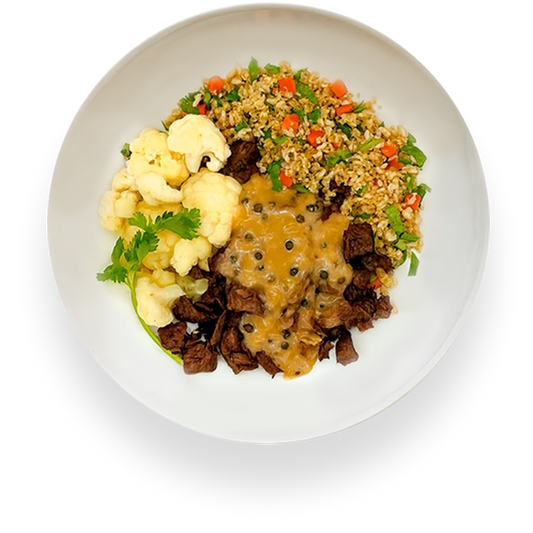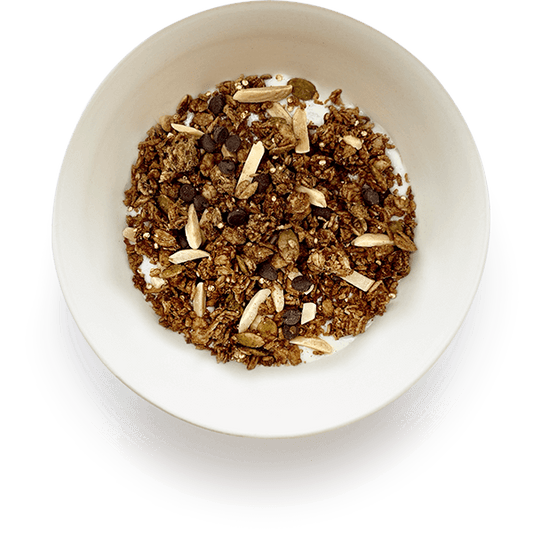The Environmental Impact of Plant-Based Eating
By FireRoad
Frequently Asked Questions
1. What is plant-based eating?
2. What are the environmental benefits of a plant-based diet?
3. Are plant-based diets healthier?
4. How can I make my plant-based meals more flavorful?
5. What tips can I follow to start a plant-based diet?
As the world becomes increasingly aware of its carbon footprint, many have turned to plant-based eating as a solution. Not only does this choice lead to better health, but it also significantly impacts the environment. In this article, we will explore the environmental benefits of adopting a plant-based diet, the positive effects of meals like a healthy breakfast bowl, and the relevant flavors that can enhance your meal experiences.
Understanding Plant-Based Eating
Plant-based eating emphasizes foods derived mainly from plants. This includes fruits, vegetables, grains, nuts, and legumes, as well as foods made from plants. While a plant-based diet does not necessarily mean vegetarian or vegan, it encourages a reduction in meat and dairy products.
Why Opt for a Plant-Based Diet?
The reasons for shifting to a plant-based diet extend beyond personal health. A major concern today is how our food choices affect the planet. Here are a few compelling reasons to consider plant-based eating:
- Reduced Greenhouse Gas Emissions: Livestock farming is one of the leading causes of greenhouse gas emissions. By choosing plant-based foods, individuals can significantly lower their carbon footprints.
- Conservation of Water: Studies show that producing plant-based foods generally requires less water compared to raising livestock. This conservation is crucial as many regions face severe water shortages.
- Preservation of Biodiversity: Deforestation for cattle ranching and crop production reduces our planet's biodiversity. A plant-focused diet can mitigate this impact by lowering demand for livestock products.
The Carbon Footprint of Meat vs. Plants
A 2018 study conducted by researchers at the University of Oxford demonstrated that producing meat has a significantly higher carbon footprint compared to plant-based foods. For instance, beef has a greenhouse gas emission rate that is 100 times greater than legumes. Transitioning to plant-based eating could make a substantial difference in combating climate change.
Are Plant-Based Diets Healthier?
Incorporating more plant-based foods into your diet can contribute to better health outcomes. A healthy breakfast bowl filled with fruits, grains, and nuts not only boosts your immune system but also provides ample nutrients essential for daily activities.
- Health Boost: A diet rich in fruits and vegetables can lower the risk of chronic diseases such as heart disease, diabetes, and cancer.
- Sustainable Energy: High-fiber plant foods give lasting energy, making you feel fuller for longer without excessive calories.
Exploring Flavor in Plant-Based Meals
Many people hesitate to switch to a plant-based diet, thinking it may lack flavor or creativity. However, there are countless delicious ways to enjoy a plant-based lifestyle! A basic healthy breakfast bowl can be transformed with the right ingredients and spices. Here are a few tips to add some excitement:
- Use Fresh Herbs: Fresh basil, cilantro, or parsley can dramatically improve flavor profiles.
- Experiment with Spices: Don't hesitate to play with spices like cumin, coriander, and smoked paprika.
- Combine Textures: Mixing crunchy nuts with creamy avocado or hearty grains can enhance the eating experience.
Embracing Seasonal Produce
Another way to ensure your meals remain vibrant is to focus on seasonal produce. Seasonal fruits and vegetables are often fresher and full of flavor, helping you get the most out of your plant-based diet.
The Global Shifts Towards Plant-Based Diets
Globally, many countries are witnessing a significant movement toward plant-based eating. From Sudanese fava bean dishes to Indian chickpea curries, diverse cultures are embracing this culinary shift. The rise of international cuisines not only enhances flavor experiences but introduces individuals to new and nutritious meal options.
The Influence of the Vegan and Vegetarian Movement
The growing popularity of vegetarianism and veganism is more than just a trend; it reflects a lifestyle change that aligns with a more sustainable future. As shops, restaurants, and cafes increasingly offer diverse plant-based options, it becomes easier than ever to embrace this lifestyle.
How Communities Are Supporting Plant-Based Living
Communities are evolving to support plant-based eating by offering local markets and co-ops, while also fostering a sense of togetherness around food. Cooking classes and community dinners where plant-based recipes are shared allow individuals to connect over exciting flavors and healthy meals.
How to Start Your Plant-Based Journey
If you're considering transitioning to a plant-based diet, here are a few tips to help you get started:
- Start Slow: Instead of completely overhauling your diet, gradually incorporate more plant-based meals into your week.
- Explore New Recipes: Take some time to find and try new recipes that excite your palate; make a healthy breakfast bowl part of your morning routine!
- Pledge to Meatless Days: Designate certain days of the week as meat-free to ease into the habit.
Balancing Plant-Based Eating and Nutritional Needs
It's crucial to ensure that a plant-based diet includes all necessary nutrients. Here are some key nutrients to consider:
- Protein: Ensure you consume sufficient protein by incorporating lentils, chickpeas, beans, and whole grains.
- Iron: Plant-based sources of iron include legumes and leafy greens. Pair them with vitamin C-rich foods for optimal absorption.
- Vitamin B12: Consider fortified foods or supplements as B12 is primarily found in animal products.
Mitigating Challenges in Plant-Based Diets
Transitioning may come with challenges, such as cravings for traditional meals or a lack of knowledge about cooking plant-based options. However, persistence, education, and community support can help overcome these barriers.
The Future of Plant-Based Eating
As consumer demand continues to evolve, companies are responding by offering a wide range of plant-based alternatives. From plant-derived cheeses to meat substitutes, the variety is enhancing the culinary experience, making it easier for more people to join the movement.
Making a Positive Impact Together
The ripple effect of choosing a plant-based diet can be monumental. By sharing experiences, recipes, and support with others, individuals can contribute positively to the environment while enjoying delicious flavors in their meals. Now’s the time to embrace the changes that lead us towards a sustainable future—one bite at a time!











